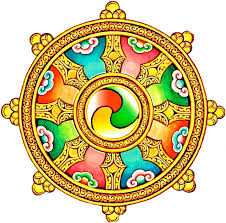
Every moment is the only moment. In the midst of tragedy you can choose to go into the Self and find the Eternal Truth. This is untainted by the transient, and often troubled, world. Despite what appears to be chaos, there is a substratum where we all are One. Through meditation on silence and affirmative prayer we connect with this Divine Matrix. Then you realize, like in the movie, that you don’t have to try to bend spoons.
There are always atrocities on the news. Anyone of average intelligence knows that sensationalism sells. But, for me, it feels so close to home right now. This body I have incarnated in is Black and I am raising children how have incarnated as mixed-race people. Yes, I deeply believe (and in moments of samadhi I have known) that and we are all One. Yet, when I open my eyes and engage in the world I, temporarily, forget.
I become angry and I fear for my son–who is the sweetest young man I know. He is 6′ 2″ at age fourteen. I plead with him to not wear his hood, to be polite, and not to cut through the neighbor’s yard–because he may be murdered. Yes, I am deeply committed to my spiritual practices and I know that no one dies. But, our karmic bond is deeper than philosophical conjecture.
I’m playing multiple roles on the stage we call “life”. Some of the roles seem to contradict each other. As a mother, I am a wildcat backed into a corner who is desperately trying to care for her cubs. As a an aspirant, I uphold the tenet that all life is equal and valuable. I also strive to remember that those who inciting violence are in pain. But, sometimes it easier said than done.
Two wise teachers told me, there are two things we always must remember. First:
Everything is the opposite of what it appears to be and nothing is the opposite of what it appears to be.
Second:
Anything you do everything you experience will either bring you closer to or farther from the Truth (Center of Consciousness, perception of God, Yoga, Unity, Christ Consciousness, and numerous names for Supreme Oneness).
The first principle is that we really never know what is going on beneath the surface level of appearances. I mentioned, perpetrators of violence are victims, as well. Karma is intertwined at every level. What we are seeing is a ripple on the surface of the ocean of cause and effect. It’s not judgement by an anthropomorphic paternal deity– we are seeing the ripples from infinite stones being thrown into the lake of eternity.
The second principle is to cease throwing stones which cloud the lake and obscure the Truth. The second principle is supreme compassion for ourselves–at any given moment we can choose to love everyone. At any moment we can look at someone and choose to remember there is no other. These are choices made in a nanosecond.
Then we bend, we grow, we advance and we can be a beacon to bring those who are still perceiving separation toward Our Collective Center of Consciousness.
Part 1 of 30 Days of Peace…









